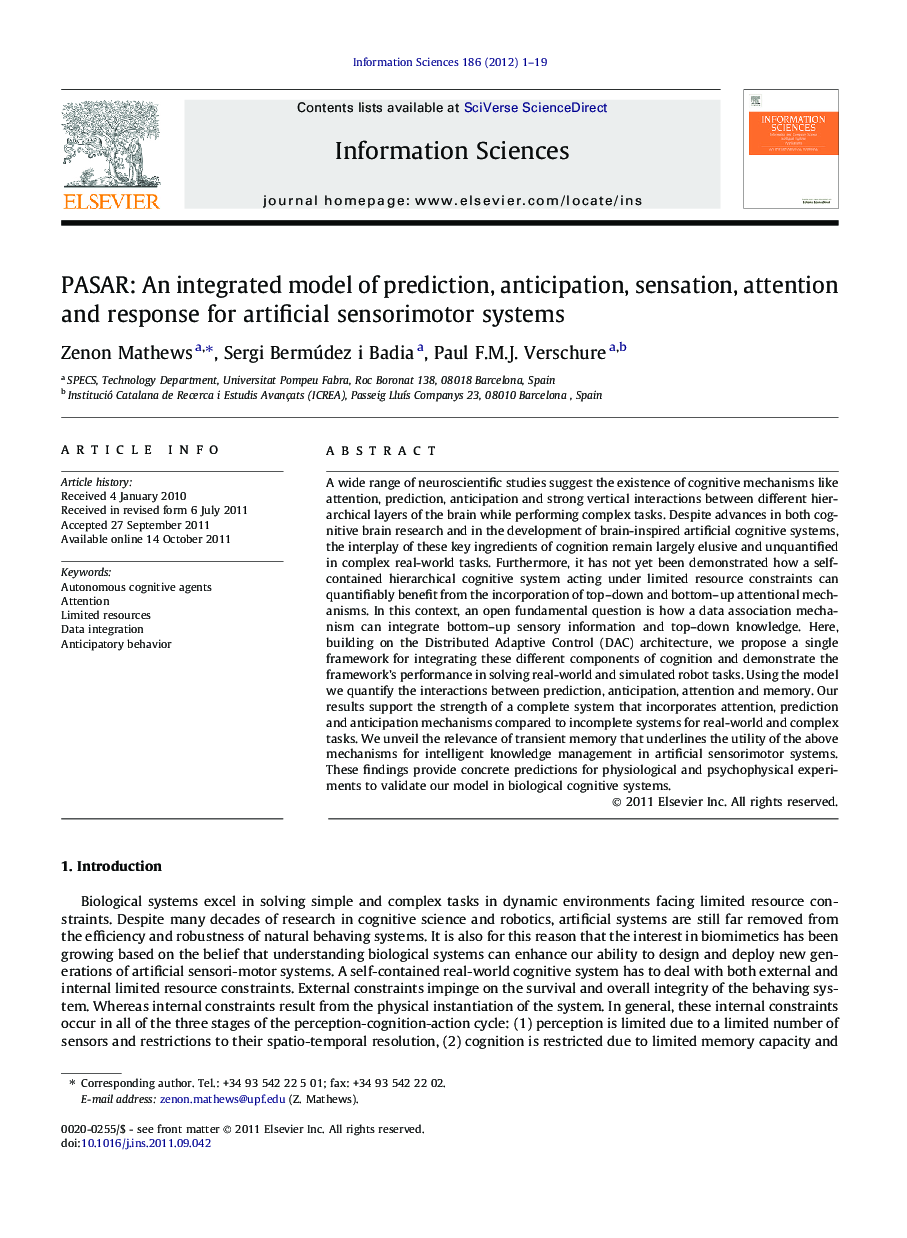| Article ID | Journal | Published Year | Pages | File Type |
|---|---|---|---|---|
| 394597 | Information Sciences | 2012 | 19 Pages |
A wide range of neuroscientific studies suggest the existence of cognitive mechanisms like attention, prediction, anticipation and strong vertical interactions between different hierarchical layers of the brain while performing complex tasks. Despite advances in both cognitive brain research and in the development of brain-inspired artificial cognitive systems, the interplay of these key ingredients of cognition remain largely elusive and unquantified in complex real-world tasks. Furthermore, it has not yet been demonstrated how a self-contained hierarchical cognitive system acting under limited resource constraints can quantifiably benefit from the incorporation of top–down and bottom–up attentional mechanisms. In this context, an open fundamental question is how a data association mechanism can integrate bottom–up sensory information and top–down knowledge. Here, building on the Distributed Adaptive Control (DAC) architecture, we propose a single framework for integrating these different components of cognition and demonstrate the framework’s performance in solving real-world and simulated robot tasks. Using the model we quantify the interactions between prediction, anticipation, attention and memory. Our results support the strength of a complete system that incorporates attention, prediction and anticipation mechanisms compared to incomplete systems for real-world and complex tasks. We unveil the relevance of transient memory that underlines the utility of the above mechanisms for intelligent knowledge management in artificial sensorimotor systems. These findings provide concrete predictions for physiological and psychophysical experiments to validate our model in biological cognitive systems.
